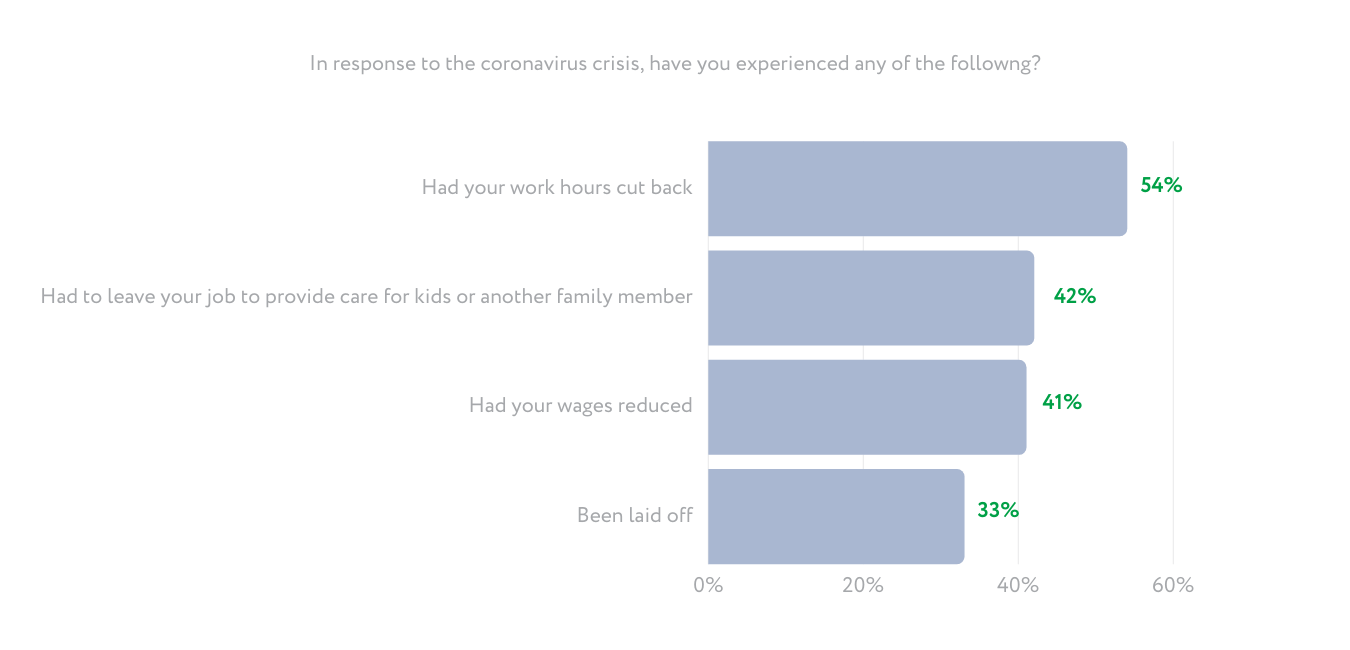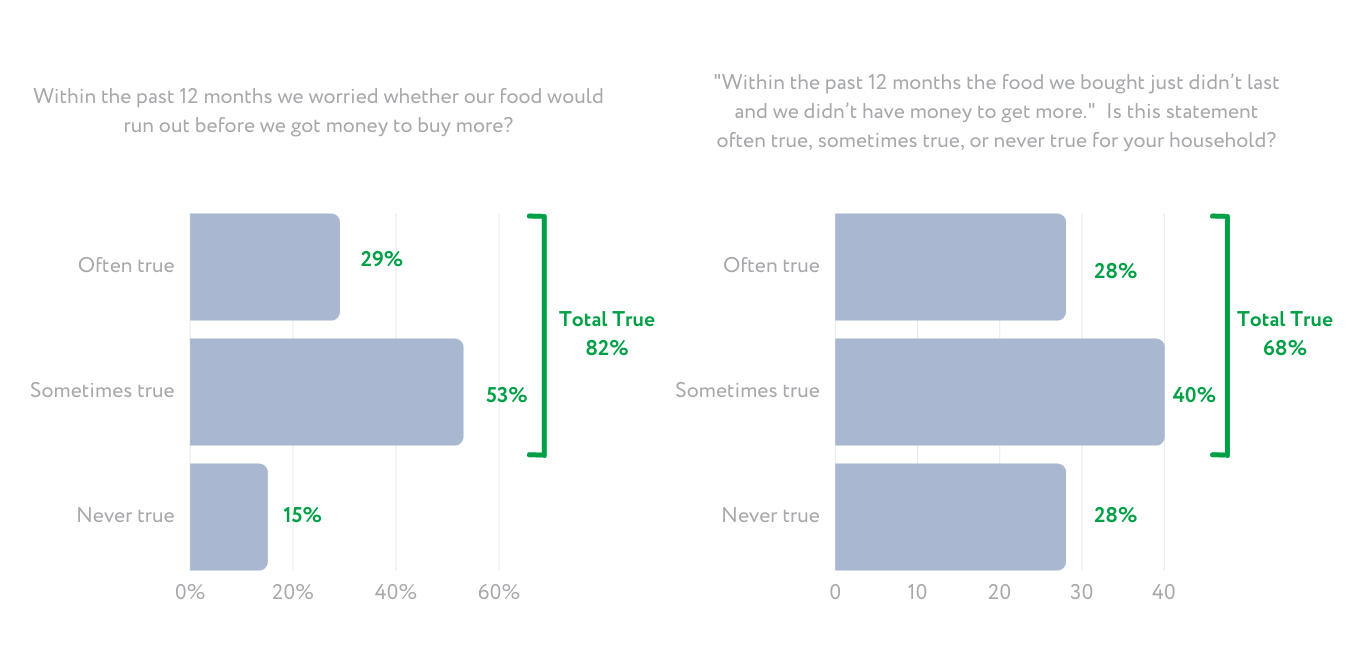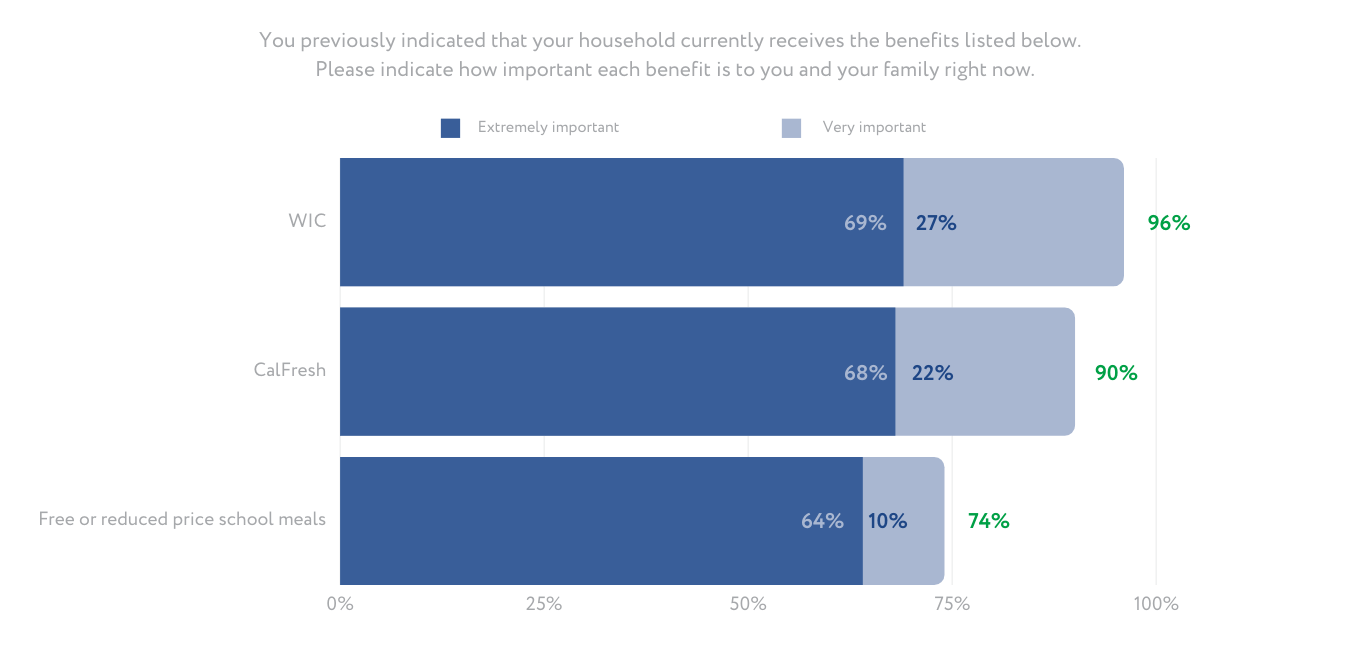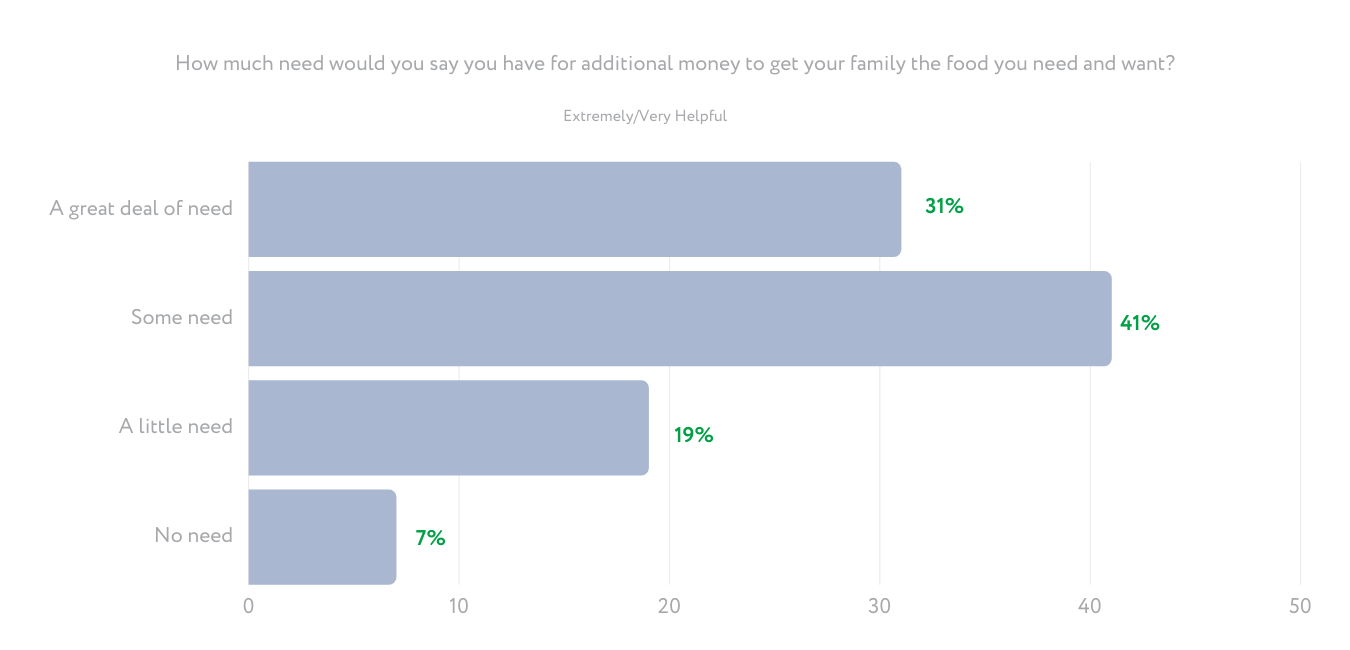Even with the help Congress has provided, families with young children are still running out of food
Findings From a Statewide Survey
Published on Feb 16, 2021 by Melissa Cannon
Background
In the fall of 2020, Nourish California engaged Fairbank, Maslin, Maullin, Metz & Associates (FM3) to conduct statewide research that would help illustrate the experiences of individuals and families across California, particularly in light of the ongoing COVID-19 pandemic. In this brief, we use data from a statewide representative opt-in survey and focus groups of Californians with household incomes below $50,000 conducted October 20 - November 13, 2020, to illustrate the experiences of parents with children under the age of five. We find the following:
Findings
Over half of parents with young children reported they had their hours cut back, wages reduced, or had to leave their job to provide care for their family during the pandemic

4 out of 5 have worried about running out of food in the past 12 months and the vast majority have run out of food before they had money to buy more.

CalFresh, WIC, and free or reduced-price school meals were highly valued among those who received them.

But even with the help Congress has provided so far, the vast majority of parents still have some level of need for additional money to buy food.

Recommendations
The COVID-19 public health and economic crisis is bigger than any other we’ve seen in our lifetimes — leaving too many California families struggling to afford food. The greatest risk right now is doing too little and waiting too long. The Biden-Harris American Rescue Plan, currently being considered by congress will help address the high levels of hunger and hardship we are seeing across our state through investments in SNAP, WIC, economic relief for families, and funding for schools and child care. Nourish California urges the California congressional delegation to quickly pass the legislation. But alone, it will not address the significant needs being faced by young children in California. State policymakers must help fill the gaps in federal relief and expand nutrition assistance to families with young children by increasing funding for child care meals, including all immigrants in food assistance, and investing in school meals for all kids (schools can leverage the Community Eligibility Provision to also serve free meals to kids in district-run preschool and child care).



